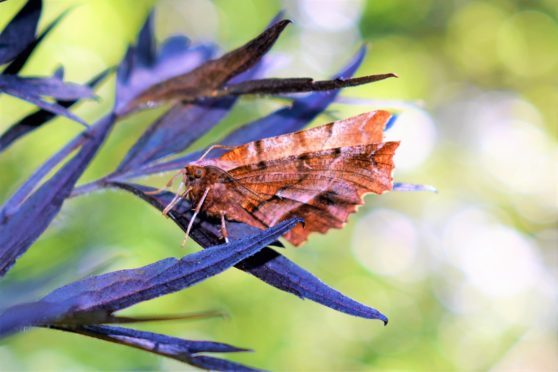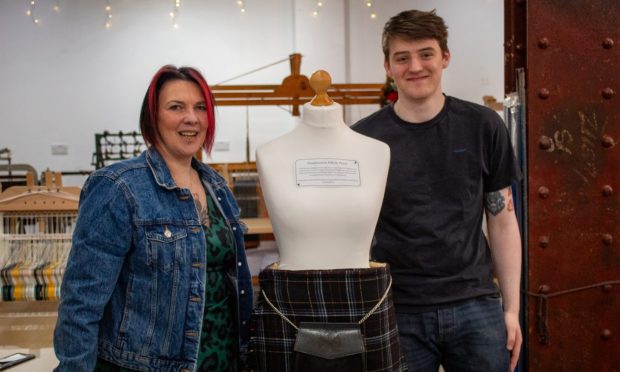Oh, what wonderful names – early thorn, nut-tree tussock, flame carpet and scalloped hazel, it is almost as if a poet had conjured their creation.
They are, of course, the names of some of our moth species, and all which I have caught in my light-trap over the last fortnight or so. My favourite just has to be the early thorn; such an intricately patterned orangey-beige moth that holds its wings upright like a butterfly and has a face just like tiny bird.
I don’t recall ever coming across early thorn moths on country walks and they are obviously expert at staying well hidden during the day, their serrated wing edges helping to break up their outline when resting in thick vegetation.
The flame carpet exhibits wonderful scribblings and subtle colour, whilst the nut-tree tussock has pale furry front legs and two little ‘eye’ marks on its wings. What incredible insects; what beauty and what colour, and the reason why I enjoy moth trapping so much – you just never know what is going to turn-up, and once identified, I release their fluttering forms back into the wood behind my house.
Even a small garden can typically support between 50 to 100 different types of moth, which in itself underlines their diversity and abundance.
There is a tendency to regard moths as drab, night-flying relatives of butterflies, but nothing could be further from the truth. Many species are as colourful as butterflies and they come in a huge variety of shapes and sizes.
Although most are night flying, not all are, and there are many species of moth that are active by day. One of the most compelling day-fliers is the aptly named chimney sweeper, which is small and sooty coloured.
Another daytime gem, which I often seek out in the sunnier south-facing glens of the Ochils, is the speckled yellow moth – an exquisite creature that looks just like a butterfly. Indeed, there are more day-flying species of moth in Scotland than there are butterflies.
Moths are important ecologically, with both caterpillars and adults being crucial sources of food for many creatures. Bats in particular are reliant upon moths and birds will even time the hatching of their eggs to coincide with peak abundance of moth caterpillars to feed their young. Moths are also prodigious pollinators.
There are some real stunners too; several years ago, I spotted a hummingbird hawk-moth in our garden, and what a perfect name, for it really did resemble a hummingbird, moving from flower to flower on shimmering wings to sip nectar through its long proboscis.
Moths have the capacity to charm and enthral, and my light-trap has become an Aladdin’s cave, which I seek out eagerly each morning to enjoy the treasures that lie within. As I carefully extract these little jewels, it is like unveiling a hidden tapestry of nature; each moth so fragile and precious, and each one so important to the wellbeing of our environment.
Info
There are between 1200 and 1300 species of moth in Scotland, compared with only 33 types of butterfly, that are generally split by entomologists into two groups – the macro moths and the micro moths.










